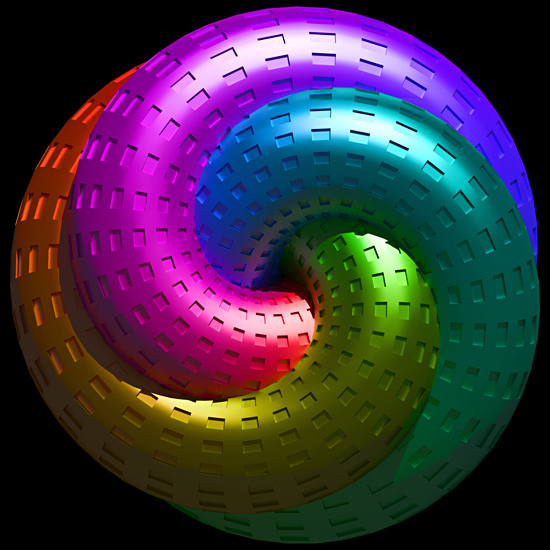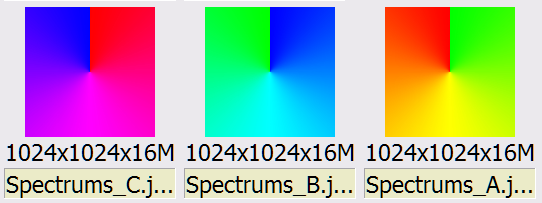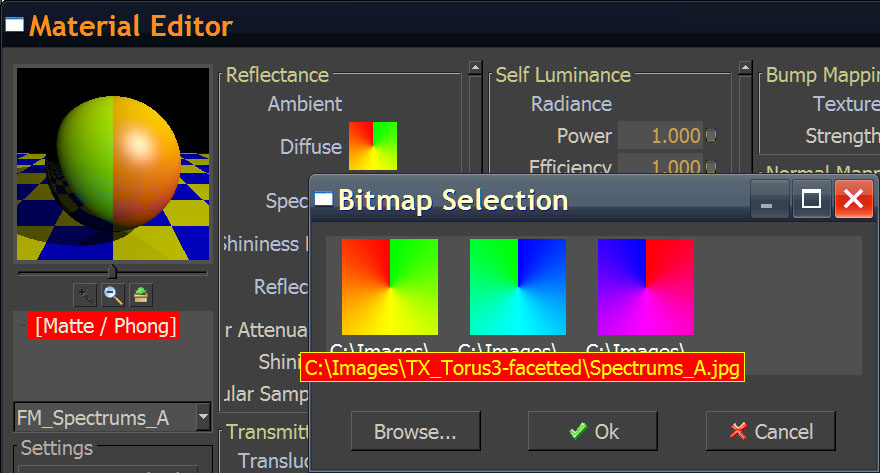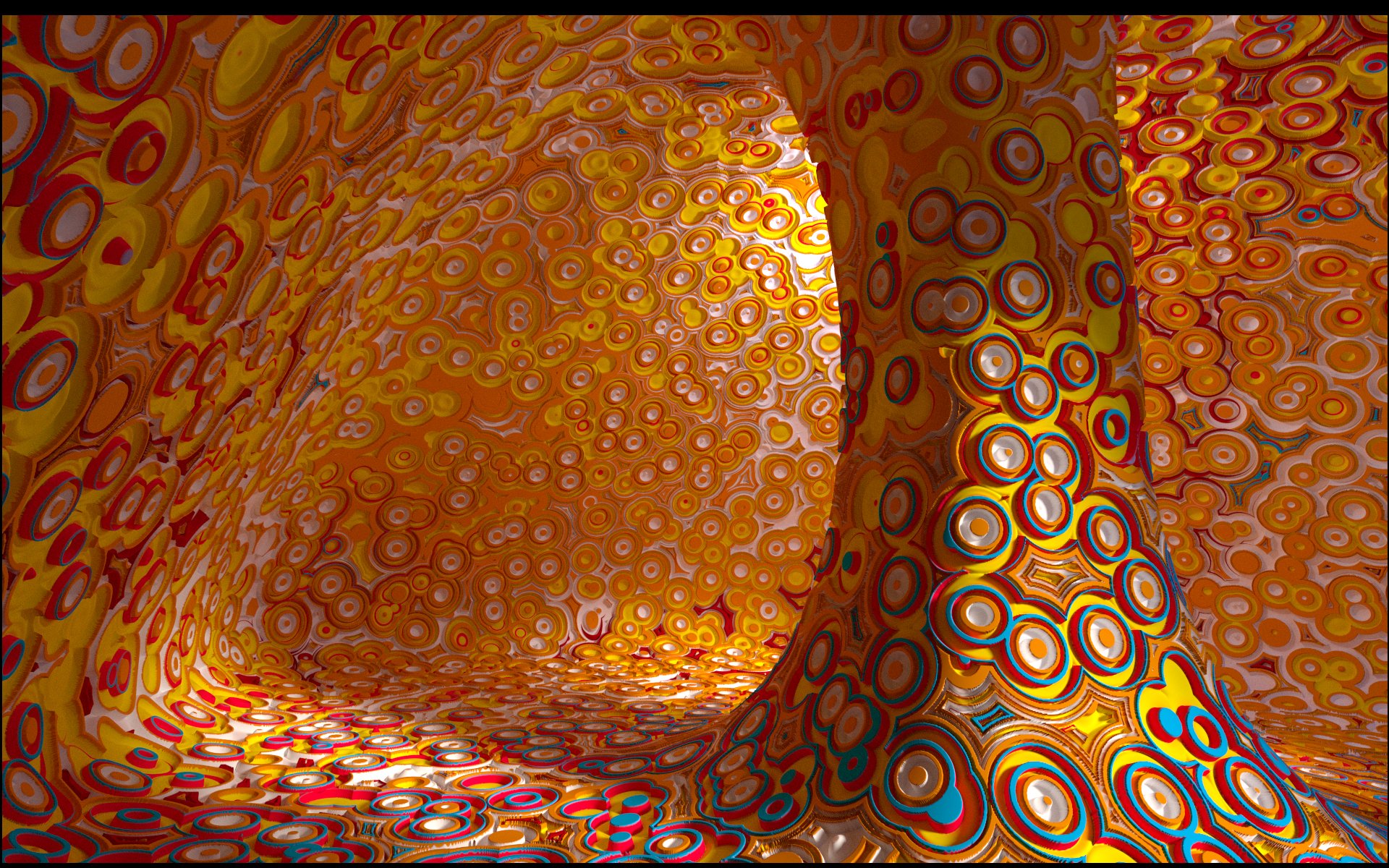An exercise: DRAWING A PARISIAN FENCE
-
I didn't think there were enough colors & shadow details in the first render...


-Taff -
 TaffGoch,
TaffGoch,that's psychedelic! Can you pleasetell how you made the color gradients? ...is that done in Kerkythea? The coloring especially is super neat

-
@d12dozr said:
...Can you pleasetell how you made the color gradients? ...is that done in Kerkythea? The coloring especially is super neat

Marcus,
I created, in Photoshop, three radial gradients...

...for use as projected textures in SketchUp. I scaled and positioned the projected textures, while in SketchUp......and, when exported to Kerkythea, the materials are retained as "Diffuse" reflectance bitmaps (with their proper rotated/projected positions):

In the "Material Editor", I added "Specular" and "Fresnel-ramp"(procedural) settings, to give the surfaces a mild metallic appearance.-Taff
-
TaffGoch,
Thank you for the explanation, you're like a magician with Sketchup, except that you will share your 'tricks'

-
Marcus (and any other interested parties,)
I've attached the Kerkythea "scene" file, so you can examine the material settings for the metallized colors.
I "jazzed" the color/specular settings a bit more:

I used MLT, and let the render run overnight (about 350 passes.) The above is a 50% scaled jpeg. The original is 1100x1100 pixels.-Taff
-
Before "metallizing;" rendered, straight from SketchUp (no material editing in KT):

-Taff -
Thank you Taff.
-
Please forgive me reviving an old thread but this entire thread is definitely one of my all time SketchUcation favorites. The depth of tutorial information in this thread is just awesome.
AND, there is new and hopefully relevant information to add. The GIF that by Cosycat that was posted by simon le bon on Sun Jul 25, 2010 has now officially gone viral.
I have seen it as the Profile image on Facebook by someone who had never heard of SketchUp. It is also regularly used by "vsauce" as a background in many of his videos, as seen here starting at 0:25.
Just FYI.
August
-
Page 3 of this thread, near the bottom, has a post
by simon le bon » Sun Jul 25, 2010,
with an image that seems to be making its way into the pop culture.Today Lady Gaga's Facebook page featured this image:
https://littlemonsters.com/post/52d986cec214e4e4488b4c27
-
Very similar to this one by Viralata

(a specialist Blender / Architecture)
-
Pour revenir au sujet:
Coming back to the first post: -
Simon...... are you still out there?
-
%(#BF0000)[
@gilles said:Pour revenir au sujet:
Coming back to the first post....
]
Thanks for posting! Great video, which I would never have otherwise seen.Fencing continues to be assembled by hand, using jigs.
Hmmm, I built my SketchUp model by hand, using "jigs" (of a sort.)
-Taff
-
@taffgoch said:
%(#BF0000)[
@gilles said:Pour revenir au sujet:
Coming back to the first post....
]
Thanks for posting! Great video, which I would never have otherwise seen.Fencing continues to be assembled by hand, using jigs.
Hmmm, I built my SketchUp model by hand, using "jigs" (of a sort.)
-Taff
Glad to see your always in the woods, much appreciate your works but you don't post enough.
-
@gilles said:
Pour revenir au sujet:
Coming back to the first post:good find

i would have guessed the assembly is more automated than this.
Advertisement







